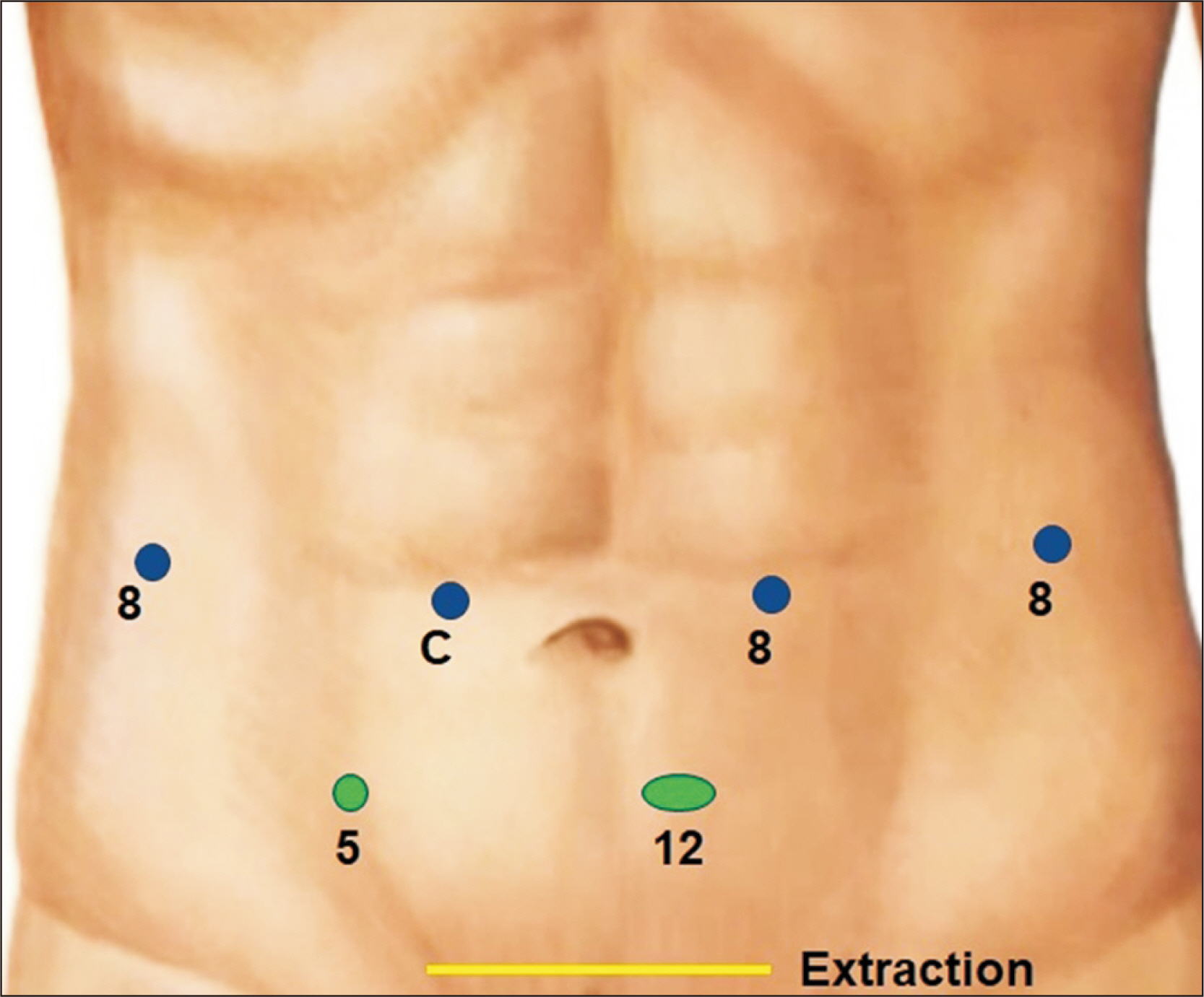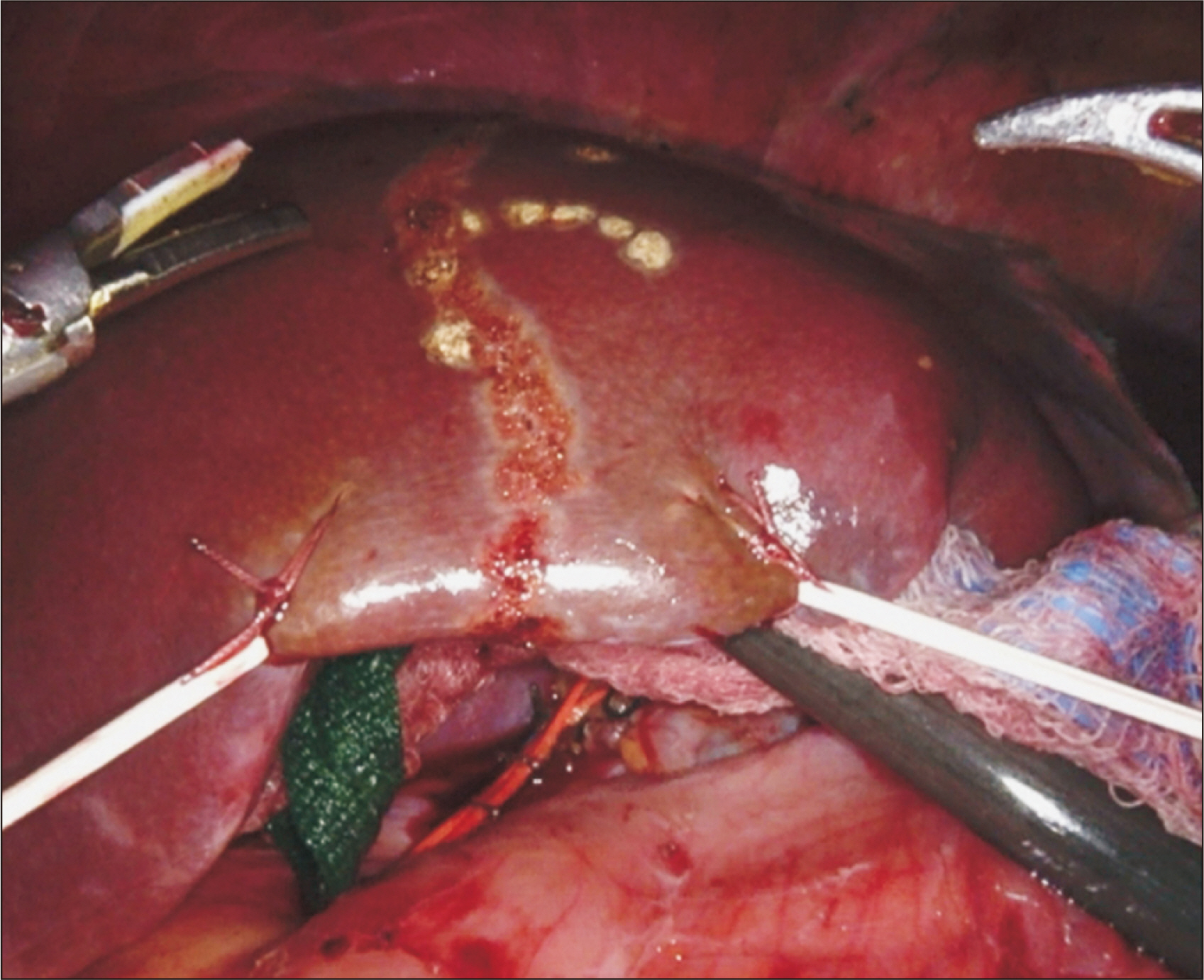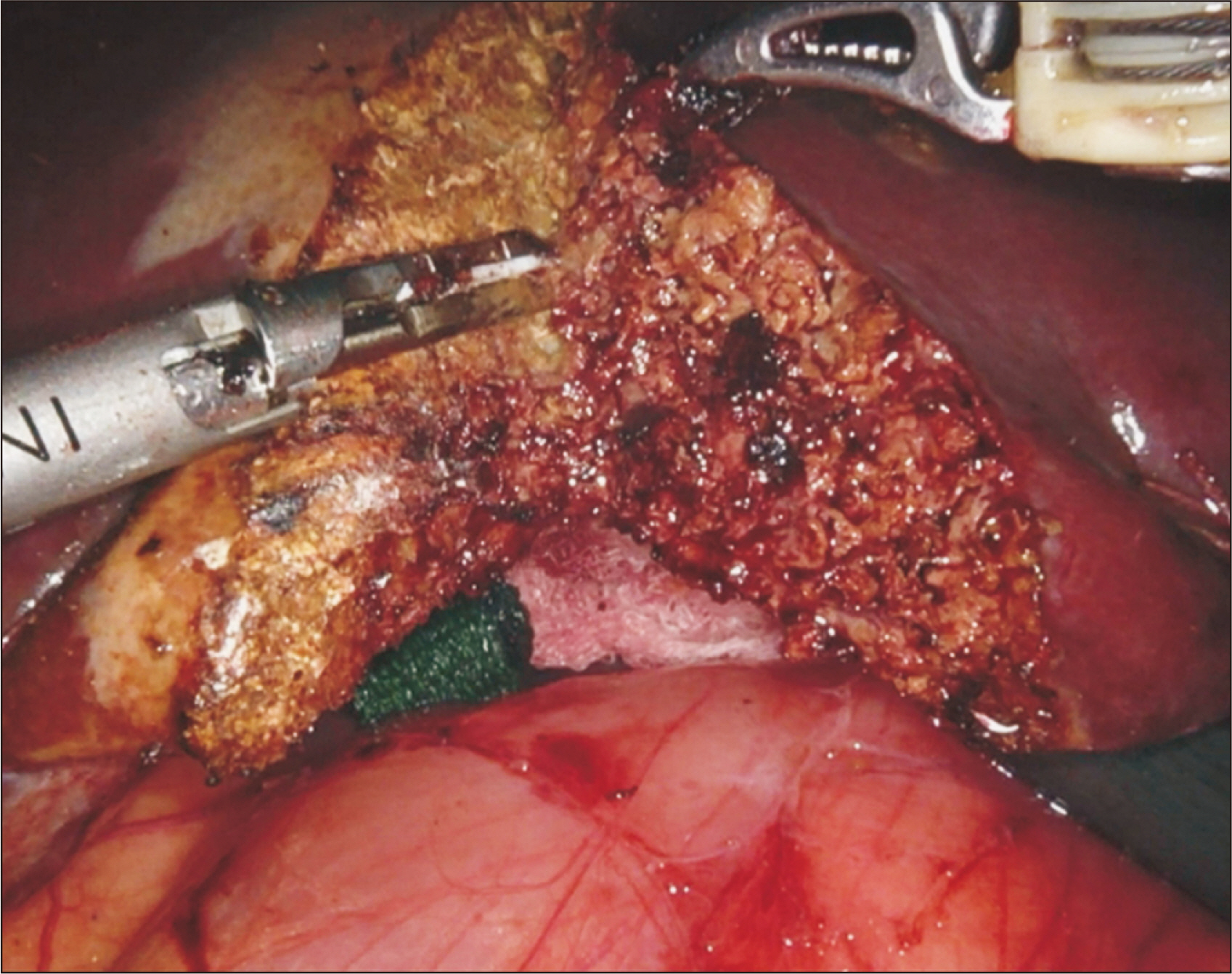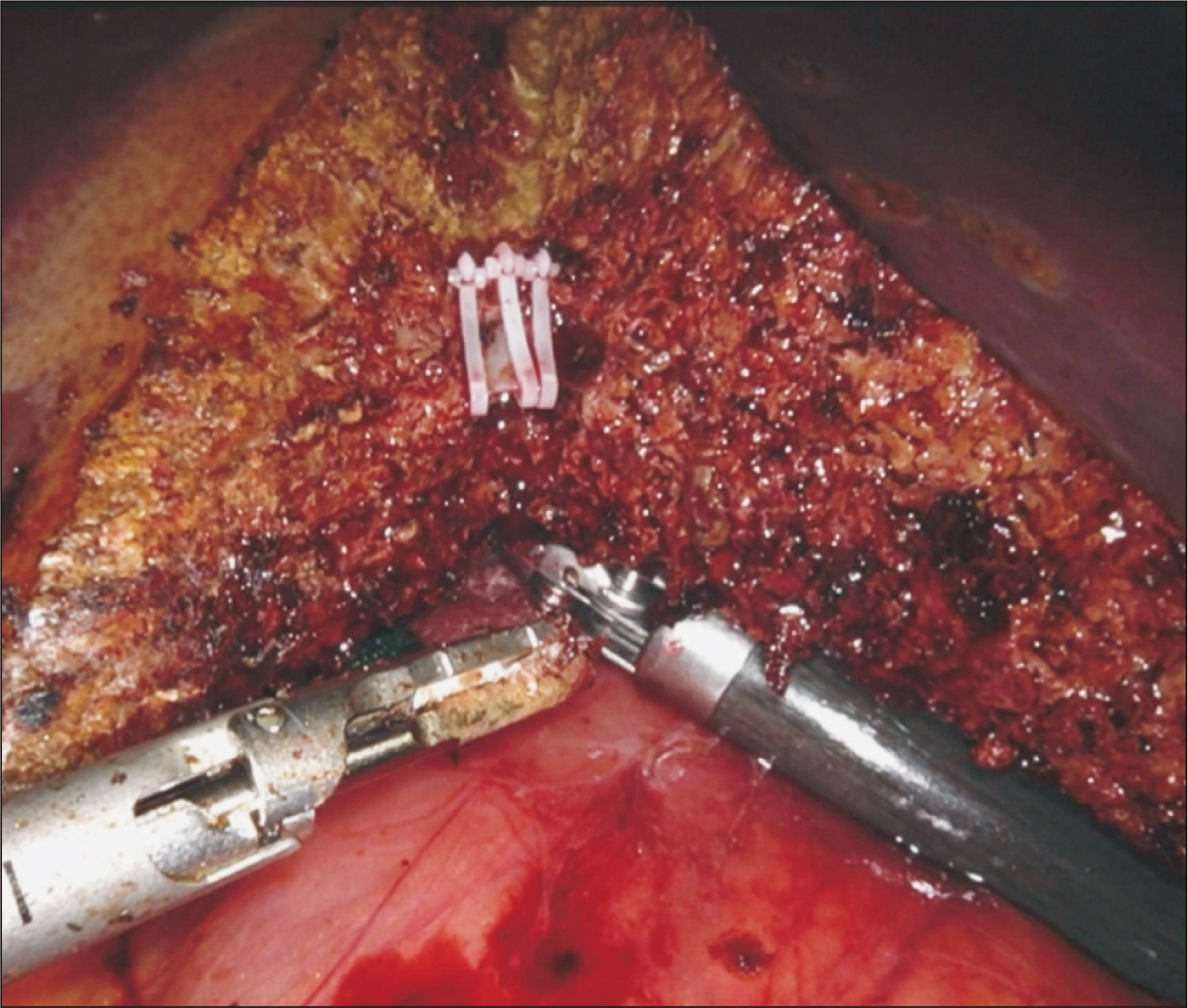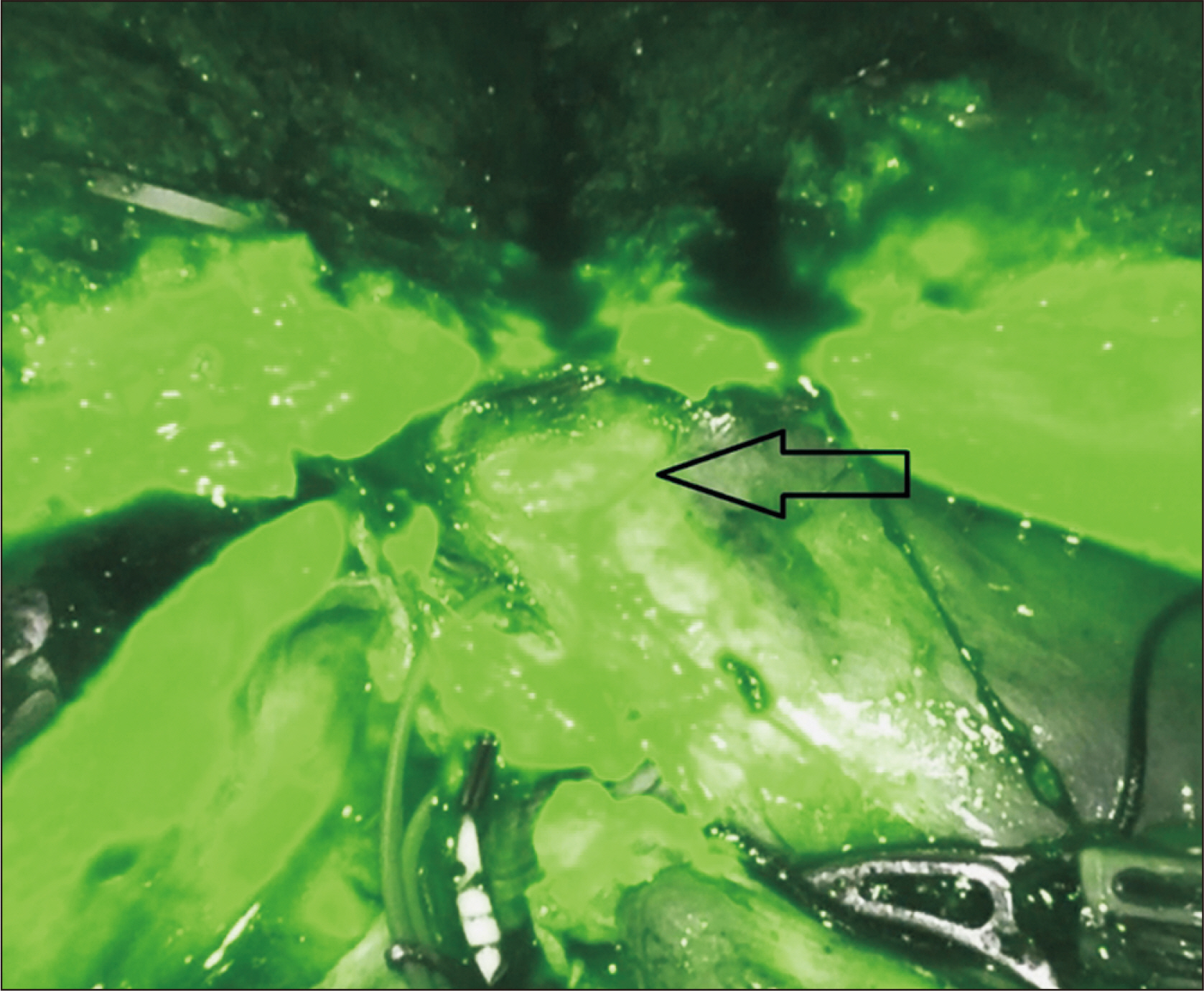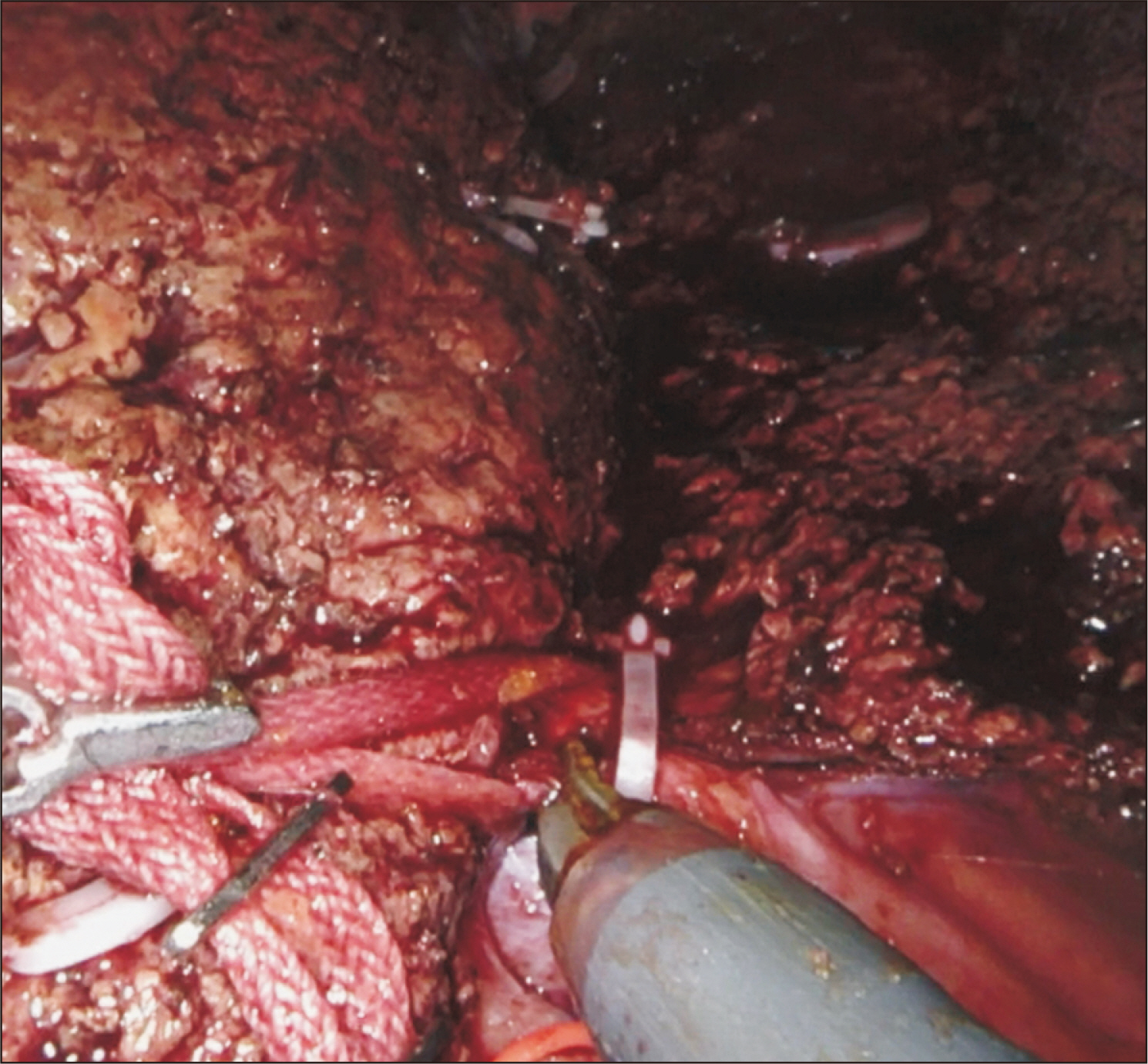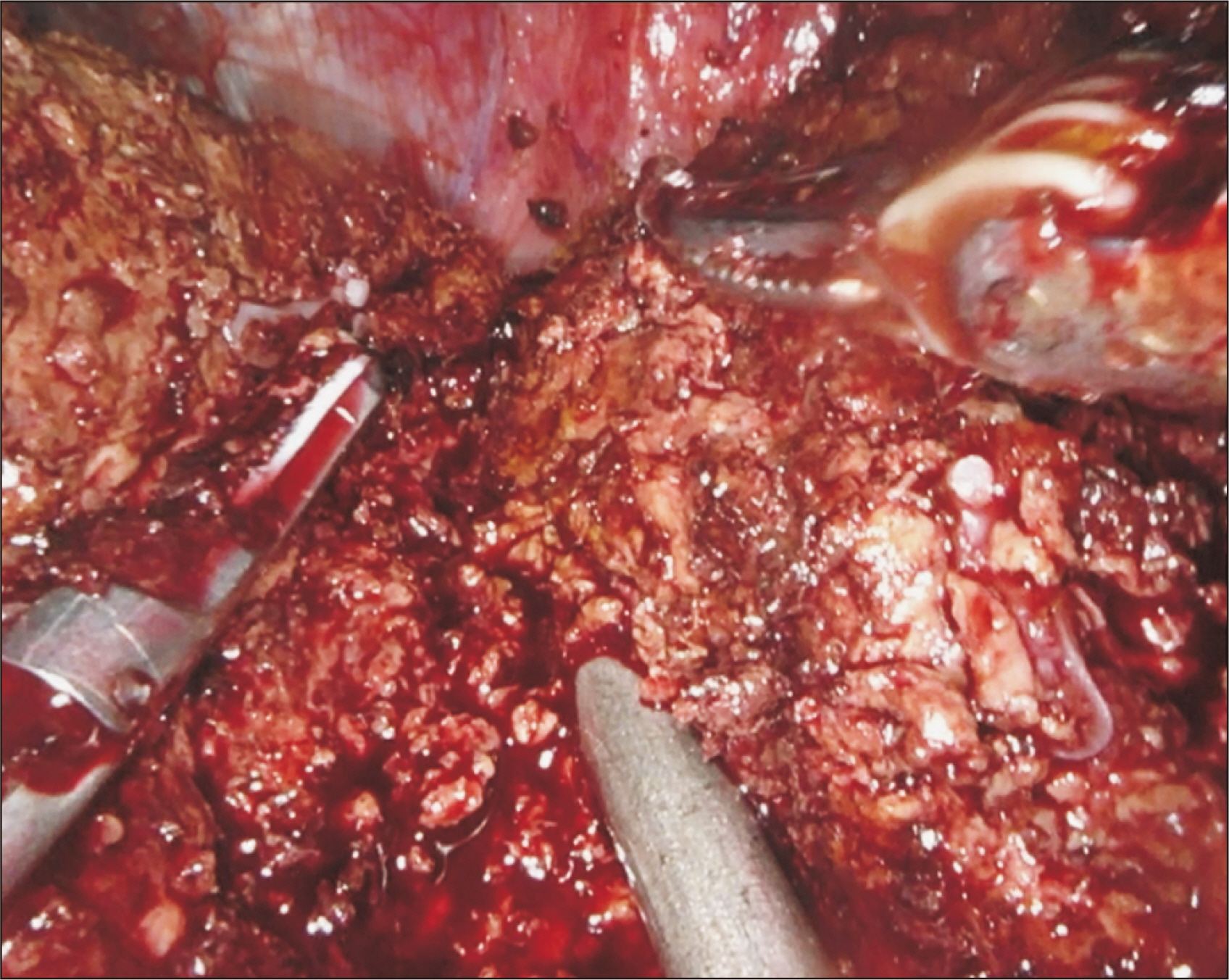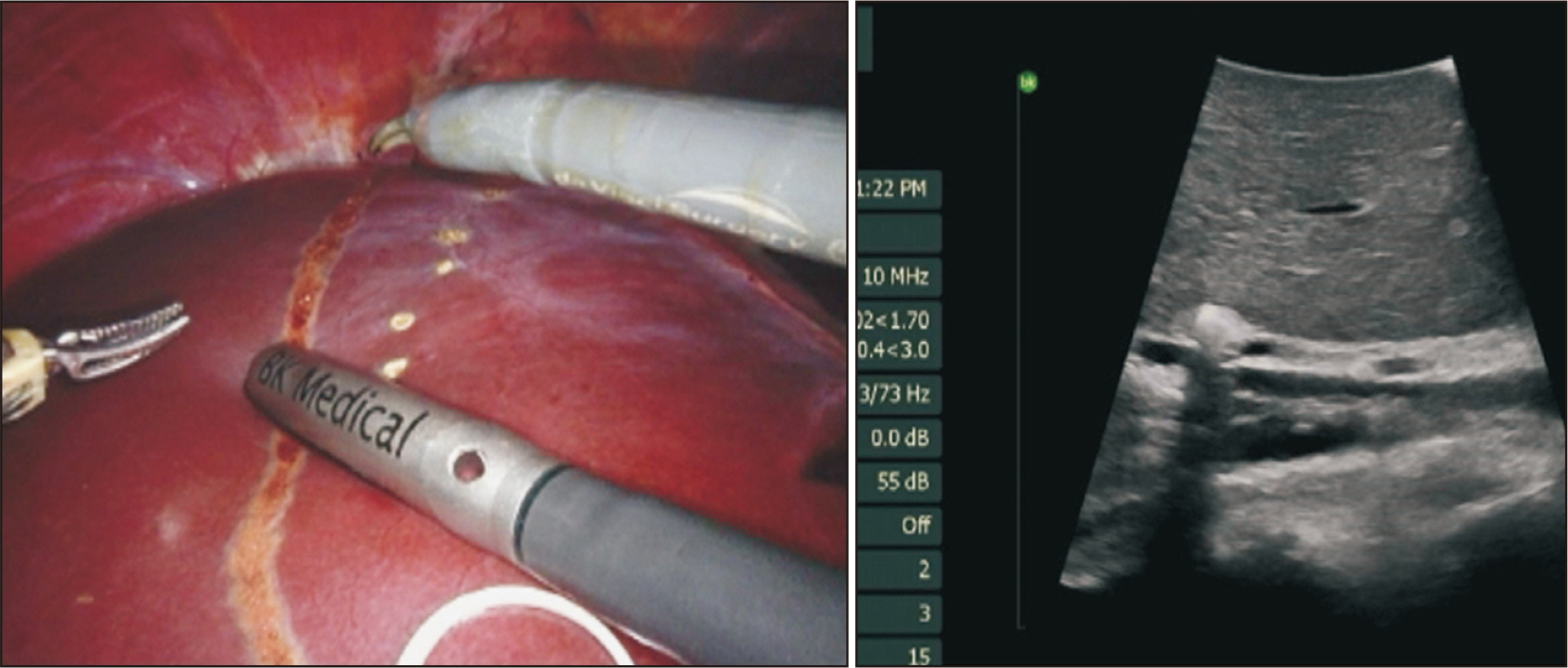Clin Transplant Res.
2024 Mar;38(1):13-17. 10.4285/kjt.23.0060.
Surgical techniques for robotic right donor hepatectomy, part 2: robotic parenchymal transection and bile duct division
- Affiliations
-
- 1Division of Transplantation, Department of Surgery, Houston Methodist Hospital, Houston, TX, USA
- KMID: 2555992
- DOI: http://doi.org/10.4285/kjt.23.0060
Abstract
- Robotic surgery is emerging as a feasible minimally invasive approach for donor hepatectomy at specialized centers. The aim of this article is to systematically describe the surgical techniques for robotic parenchymal transection and bile duct division in right donor hepatectomy. The setup of the robotic arms, methods of parenchymal transection using robotic instruments, and right hepatic duct division with the aid of indocyanine green dye are detailed, along with the pearls and pitfalls of these two parts of the operation.
Keyword
Figure
Reference
-
1. Rho SY, Lee JG, Joo DJ, Kim MS, Kim SI, Han DH, et al. 2022; Outcomes of robotic living donor right hepatectomy from 52 consecutive cases: comparison with open and laparoscopy-assisted donor hepatectomy. Ann Surg. 275:e433–42. DOI: 10.1097/SLA.0000000000004067. PMID: 32773621.
Article2. Broering D, Sturdevant ML, Zidan A. 2022; Robotic donor hepatectomy: a major breakthrough in living donor liver transplantation. Am J Transplant. 22:14–23. DOI: 10.1111/ajt.16889. PMID: 34783439.
Article3. Chandran B, Varghese CT, Balakrishnan D, Nair K, Mallick S, Mathew JS, et al. 2022; Technique of robotic right donor hepatectomy. J Minim Access Surg. 18:157–60. DOI: 10.4103/jmas.JMAS_35_21. PMID: 35017406. PMCID: PMC8830578.
Article4. Chen PD, Wu CY, Hu RH, Chen CN, Yuan RH, Liang JT, et al. 2017; Robotic major hepatectomy: is there a learning curve? Surgery. 161:642–9. DOI: 10.1016/j.surg.2016.09.025. PMID: 27884614.5. Choi GH, Choi SH, Kim SH, Hwang HK, Kang CM, Choi JS, et al. 2012; Robotic liver resection: technique and results of 30 consecutive procedures. Surg Endosc. 26:2247–58. DOI: 10.1007/s00464-012-2168-9. PMID: 22311301.
Article6. Choi GH, Chong JU, Han DH, Choi JS, Lee WJ. 2017; Robotic hepatectomy: the Korean experience and perspective. Hepatobiliary Surg Nutr. 6:230–8. DOI: 10.21037/hbsn.2017.01.14. PMID: 28848745. PMCID: PMC5554764.
Article7. Rhu J, Kim MS, Choi GS, Jeong WK, Kim JM, Joh JW. 2021; A novel technique for bile duct division during laparoscopic living donor hepatectomy to overcome biliary complications in liver transplantation recipients: "cut and clip" rather than "clip and cut". Transplantation. 105:1791–9. DOI: 10.1097/TP.0000000000003423. PMID: 32826797.
Article
- Full Text Links
- Actions
-
Cited
- CITED
-
- Close
- Share
- Similar articles
-
- The method of using robotic Harmonic ACE curved shears for parenchymal transection in robotic hepatectomy
- Surgical techniques for robotic right donor hepatectomy, part 1: robotic hilar dissection and right lobe mobilization
- Total robotic right hepatectomy for multifocal hepatocellular carcinoma using vessel sealer
- Current status of robotic surgery for liver transplantation
- Stepwise development of robotic donor right hepatectomy according to the anatomical variations in the hilum and the graft volume

